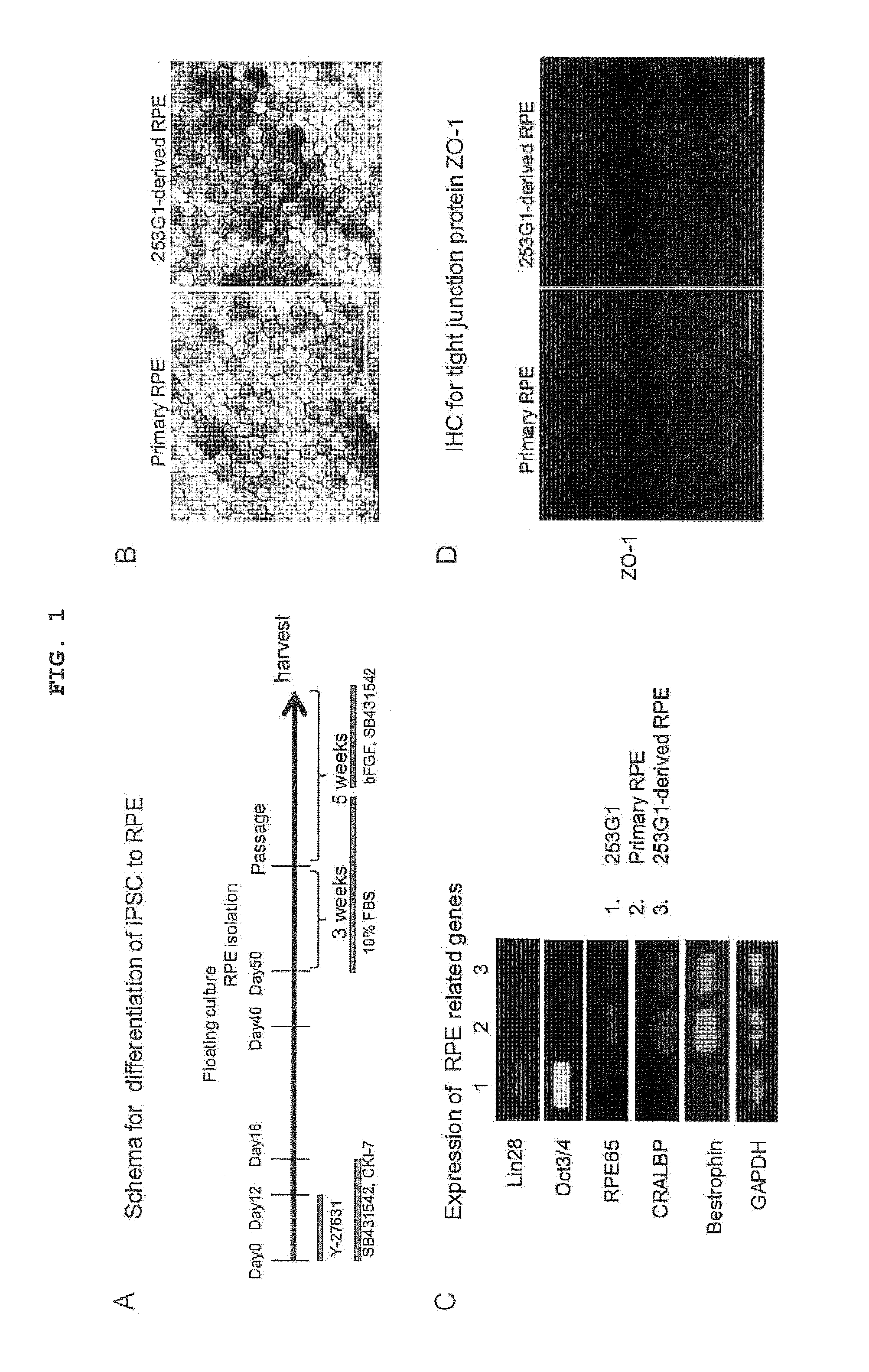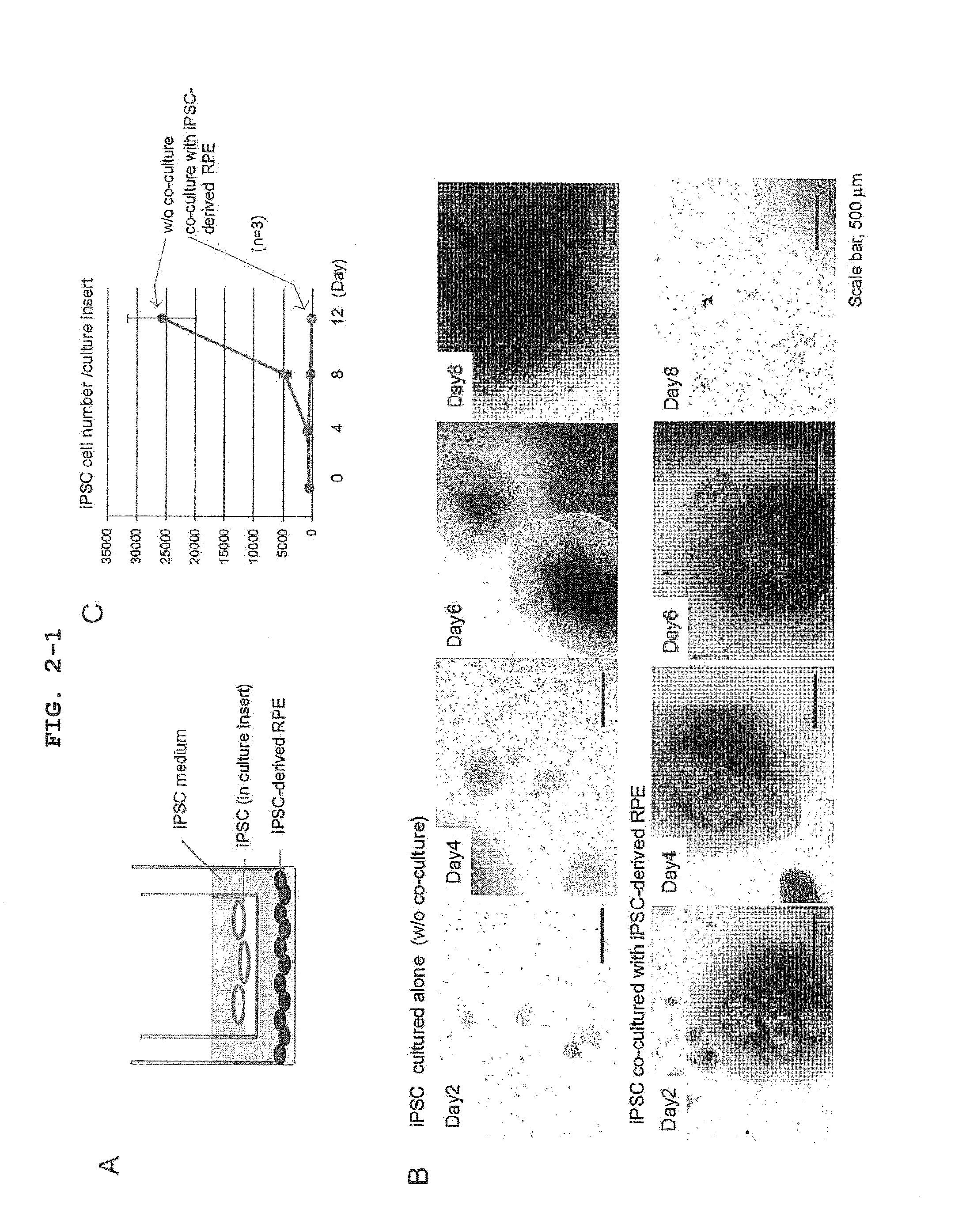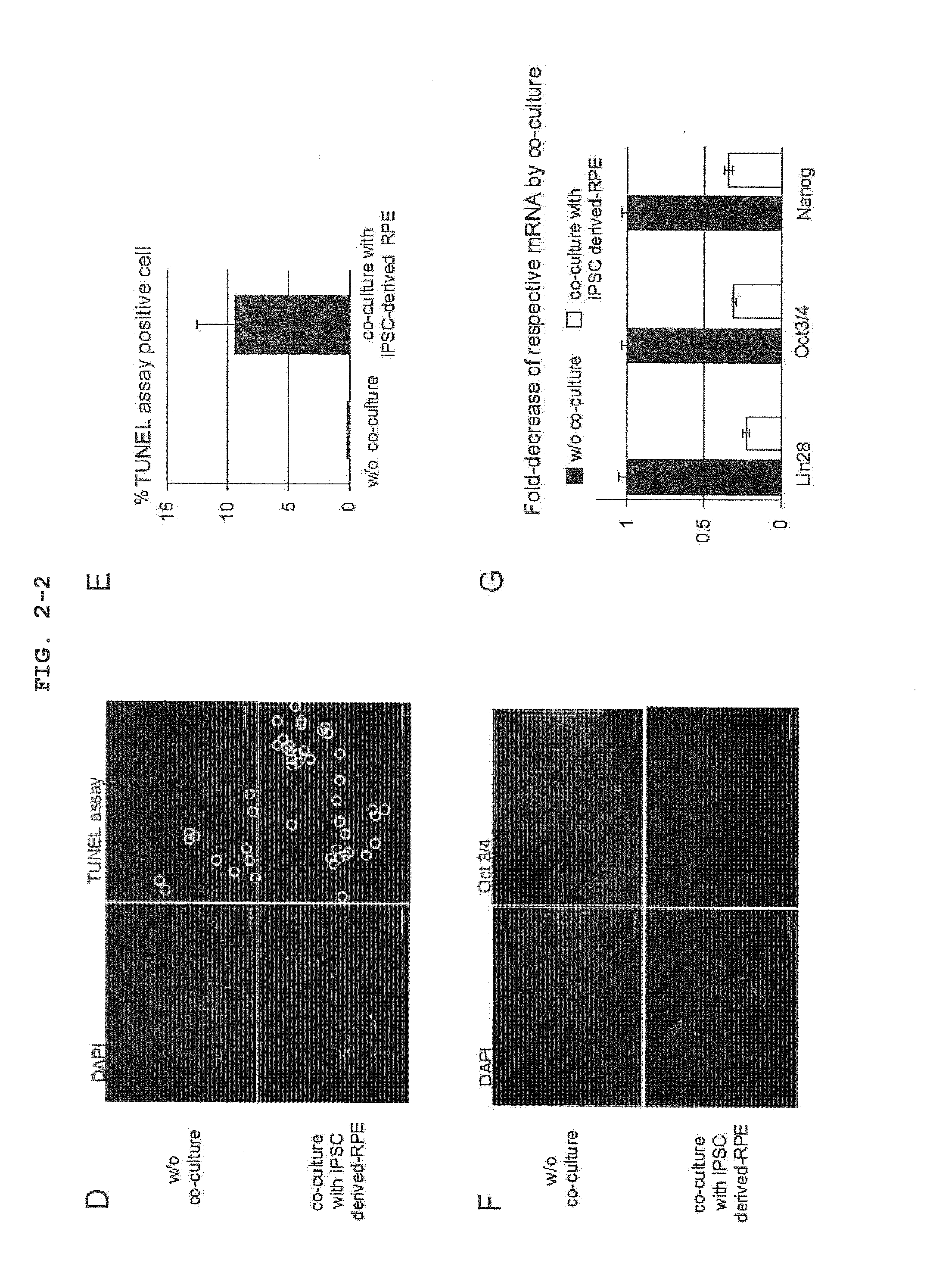Cell sorting method
- Summary
- Abstract
- Description
- Claims
- Application Information
AI Technical Summary
Benefits of technology
Problems solved by technology
Method used
Image
Examples
reference example 1
Differentiation Induction from iPS Cell into RPE Cell
[0119]To establish robust differentiation protocol from pluripotent stem cell into retinal pigment epithelium (RPE), the differentiation protocol shown in FIG. 1A was used. To provide profile of reproducible iPSC-derived RPE, commercially available iPSC clone 253G1 (Nakagawa M, et al. (2008) Nat Biotechnol. 26:101-106; BioResource Center, RIKEN, Tsukuba) was used as a cell source for RPE differentiation. When cultured in a dish, RPE is a polygonal single layer cell showing sporadic pigment deposition. iPSC clone 253G1-derived RPE and primary RPE showed a similar morphology by microscopic observation (FIG. 1B). To examine whether iPSC-derived RPE shows gene expression characteristic of primary RPE, the expression of RPE65, CRALBP and bestrophin was analyzed by RT-PCR. While 253G1-derived RPE cells expressed mRNAs of RPE65, CRALBP and bestrophin, they did not express pluripotency-related genes such as Lin28, Oct3 / 4 and the like (FIG...
example 1
Inhibition of iPS Cell Growth by Co-Culture with iPSC-Derived RPE Cell
[0120]To examine an influence of a factor secreted from iPSC-derived RPE on iPS cell in vitro, the co-culture experiment shown in FIG. 2A was designed. That is, iPSC seeded on a culture insert (transwell, Corning) coated with Matrigel (BD) was co-cultured in an iPS cell medium (serum-free ReproFF added with bFGF) with iPSC-derived RPE seeded on a dish coated with CELL start (Invitrogen). iPSC in the culture insert was recovered every 4 days, and the cell number was counted. As a result, it was clarified that the growth of iPSC was markedly inhibited by co-culture with iPSC-derived RPE (FIGS. 2B, 2C). A similar trans-effect was observed even when iPSC was co-cultured with primary RPE (FIGS. 3A, B and C). The marked inhibition of the growth of iPSC co-cultured with iPSC-derived RPE was at least partially mediated by apoptotic cell death, as verified by the presence of obvious TUNEL assay positive cells (FIGS. 2D, 2E...
example 2
Induction of Apoptotic Cell Death of iPS Cell by PEDF
[0122]PEDF protein in an iPSC-derived RPE conditioned medium was detected by Western blotting using an anti-PEDF antibody (BioProducts, MD) (FIG. 4A). A fresh iPS cell medium free of co-culture was used as a control sample. The PEDF level in 24 hr of cell culture (24 hr after exchange with fresh medium) was measured by ELISA. Both the primary RPE conditioned medium and iPSC-derived conditioned medium contained a considerable amount of PEDF (exceeding 1 μg / ml) (FIG. 4B).
[0123]Therefore, an influence of PEDF on the growth of iPSC was tested. An anti-PEDF neutralizing antibody (BioProducts, MD) was added to the co-culture system, and the growth of iPSC in the culture insert was examined. The growth of 253G1 co-cultured with 253G1-derived RPE was markedly inhibited in the presence of control IgG, but such inhibition of cell proliferation was considerably blocked in the presence of an anti-PEDF antibody (FIG. 4C). Although the dose and...
PUM
 Login to View More
Login to View More Abstract
Description
Claims
Application Information
 Login to View More
Login to View More - R&D
- Intellectual Property
- Life Sciences
- Materials
- Tech Scout
- Unparalleled Data Quality
- Higher Quality Content
- 60% Fewer Hallucinations
Browse by: Latest US Patents, China's latest patents, Technical Efficacy Thesaurus, Application Domain, Technology Topic, Popular Technical Reports.
© 2025 PatSnap. All rights reserved.Legal|Privacy policy|Modern Slavery Act Transparency Statement|Sitemap|About US| Contact US: help@patsnap.com



